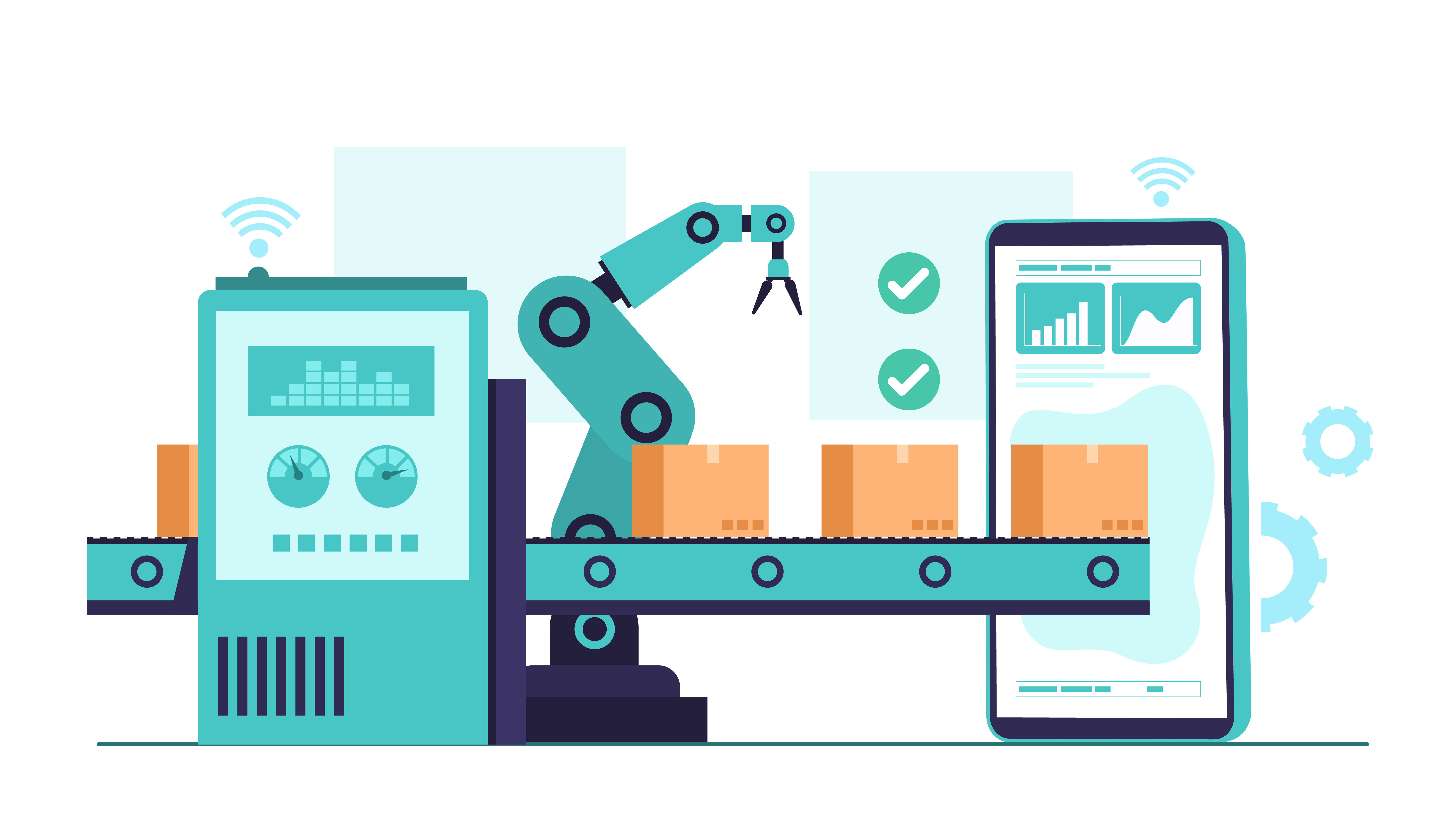How Microlearning Improves Manufacturing Employee Training
The manufacturing industry faces a critical challenge in 2025. While manufacturers and distributors provide the highest average training hours across all industries at 64 hours per employee annually, the sector still needs to fill up to 3.8 million jobs by 2033 due to persistent skills shortages. This paradox reveals a fundamental problem: traditional training methods aren't delivering the results the manufacturing industry desperately needs. Manufacturing employees require constant upskilling in safety protocols, equipment operation, and compliance training, yet conventional classroom-based learning struggles to keep pace with the fast-moving factory floor. Enter microlearning, a transformative approach that delivers bite-sized, highly targeted training modules designed to fit seamlessly into the workflow of busy manufacturing professionals.
The Training Challenge in the Manufacturing Industry
The manufacturing industry operates under unique pressures that make employee training particularly challenging. Production schedules run 24/7 across multiple shifts, leaving minimal time for lengthy training sessions. Workers need immediate access to critical information about machinery operation, safety procedures, and quality standards, yet pulling employees off the production line for hours-long training creates costly disruptions.
Manufacturing compliance training presents another layer of complexity. Regulatory requirements from OSHA, EPA, and industry-specific bodies demand regular certification and recertification. Workplace safety incidents decrease by 28% when companies implement effective compliance training programs, making this training not just mandatory but mission-critical. However, traditional compliance sessions often fail to engage workers, leading to poor knowledge retention and increased risk on the factory floor.
The skills gap compounds these challenges. With an aging workforce retiring and new technologies like automation and AI reshaping production processes, manufacturers must train employees faster and more effectively than ever before. The current approach of annual or quarterly training sessions simply cannot keep up with the rapid pace of change in modern manufacturing environments.
What Is Microlearning and Why Does It Matter for Manufacturing?
Microlearning delivers focused training content in short, digestible modules typically lasting 3-7 minutes. Instead of hour-long seminars or day-long workshops, employees access targeted lessons on specific topics exactly when they need them. For manufacturing, this means a machine operator can quickly review safety procedures before starting a shift, or a quality inspector can refresh their knowledge on new testing protocols without leaving their station.
The approach relies on three key principles: chunking complex information into manageable segments, strategic repetition to reinforce learning, and recall activities that prompt employees to apply their knowledge. This methodology aligns perfectly with how the human brain processes and retains information, particularly in high-pressure manufacturing environments where workers must remember critical details while performing hands-on tasks.
Microlearning matters for manufacturing because it meets employees where they are. Shift workers can complete lessons on mobile devices during breaks. Supervisors can assign specific modules to address immediate skill gaps. New hires can onboard progressively without overwhelming information dumps. The flexibility and accessibility of microlearning transform training from a periodic disruption into a continuous, integrated part of the workday.
Key Benefits of Microlearning for Manufacturing Employee Training
Manufacturing organizations implementing microlearning report dramatic improvements across multiple metrics. Knowledge retention increases by up to 50% compared to traditional training methods. This boost stems from the focused nature of microlearning content and the ability to revisit modules as needed, reinforcing critical information over time.
Employee engagement sees even more impressive gains. Microlearning platforms boost engagement by up to 80%, with some organizations reporting 6-10x improvement in completion rates. The gamified elements, bite-sized format, and mobile accessibility create a learning experience that resonates with modern workers who are accustomed to consuming information in short bursts.
Operational efficiency improves significantly when training fits seamlessly into workflows. Manufacturing employees can access just-in-time learning without leaving the production floor. A technician troubleshooting equipment can pull up a quick refresher on diagnostic procedures. A forklift operator can review safety protocols in minutes rather than waiting for the next quarterly training session. This on-demand accessibility reduces downtime and keeps production moving.
Cost-effectiveness represents another compelling benefit. Traditional training requires facilities, instructors, printed materials, and most expensive of all, taking employees off productive work for extended periods. Microlearning reduces these costs dramatically while delivering superior outcomes. Organizations achieve 100% compliance training in one-third of the time required by conventional methods, translating directly to cost savings and improved productivity.
Microlearning vs Traditional Training in Manufacturing
|
Features |
Traditional Training |
5mins.ai Training |
|
Content Format |
Long 1hr courses |
Tiktok-style micro-lessons |
|
Device Experience |
Desktop first |
Mobile first |
|
Time to Competence |
Weeks-Months |
Days-Weeks |
|
Engagement |
Low,drop-off after 15 mins |
Gamified, Tiktok-style, 6-10x boost |
|
Customisation |
Off-the-shelf only |
Granular customisation, upload internal content |
|
Admin Burden |
Manual, fragmented |
Automated, audit-ready |
|
Retention |
Poor, compliance fatigue |
High, reinforced learning |
|
Scalability |
One-size-fits-all |
AI-personalized, role-based, region-based |
The comparison reveals why microlearning has become essential for modern manufacturing. Traditional methods simply cannot match the flexibility, efficiency, and effectiveness that today's manufacturing environments demand. While classroom training still has a place for certain complex topics, microlearning addresses the majority of ongoing training needs more effectively.
Compliance Training Made Simple with Microlearning
Manufacturing compliance training covers a vast territory: OSHA safety regulations, equipment operation certifications, hazardous materials handling, quality control standards, and environmental protocols. Each area requires regular training and documentation, creating an administrative burden that traditional methods struggle to manage efficiently.
Microlearning transforms compliance training from a dreaded obligation into an engaging, manageable process. The 5Mins platform helps organizations achieve 100% compliance in one-third of the time compared to traditional methods. This acceleration comes from several factors: bite-sized modules that employees actually complete, mobile accessibility that eliminates scheduling conflicts, and automated tracking that provides real-time visibility into training status.
The content stays current with regulatory changes. When OSHA updates safety guidelines or new equipment arrives on the production floor, training modules can be revised and deployed immediately rather than waiting months for the next scheduled training session. This agility ensures employees always work with the latest information, reducing compliance risks and safety incidents.
Gamification elements make compliance training more engaging. Leaderboards, points, and certifications create friendly competition that motivates employees to complete required training. The interactive format, featuring quizzes and scenario-based learning, ensures employees truly understand and retain critical safety and compliance information rather than simply sitting through presentations.
Real-world success stories show the measurable impact. For instance, ICAB achieved remarkable results after implementing 5Mins’ microlearning approach:
- 300% more training sessions delivered
- 87% less session time
- 95% content creation time saved
- 0 formal training before 5Mins
This transformation demonstrates how microlearning can create a culture of continuous learning, even in environments that previously lacked structured compliance training. By turning essential safety education into short, engaging bursts of learning, 5Mins helps manufacturing companies stay compliant, boost productivity, and reduce operational risks.
How 5Mins Transforms Manufacturing Training
The 5Mins.ai platform delivers microlearning designed for manufacturing's unique needs. With over 15,000 microlessons covering workplace safety to leadership development, manufacturers access comprehensive training for technical and soft skills.
The mobile-first design ensures factory floor workers learn anytime, anywhere. Whether on smartphones during breaks or tablets at workstations, employees train on their schedule. This proves valuable for shift workers missing traditional sessions.
Real-time analytics give HR leaders unprecedented visibility into training effectiveness. The dashboard tracks completion rates, assessment scores, and skill development. Managers identify gaps, assign targeted modules, and measure improvement. Automated reminders ensure compliance training completion before expiration.
Integration with Slack, Teams, Zoom, HRIS, and LMS platforms embeds learning into daily tools. Training notifications appear where workers spend time, making learning in the flow of work reality.
Content creation tools allow custom training modules for specific equipment and processes. Organizations transform existing materials into engaging microlearning, preserving institutional knowledge.
Real Success Stories: Manufacturing Companies Using Microlearning
Global manufacturing companies have achieved remarkable results implementing microlearning through 5Mins. Organizations report engagement rates 6-10x higher than traditional training methods, with completion rates above 90% for mandatory compliance training.
Manufacturing teams complete compliance certifications in one-third the time previously required. This time savings translates to reduced training costs and increased operational efficiency.
The platform's effectiveness shows in concrete outcomes: fewer safety incidents, improved quality metrics, and faster onboarding. The just-in-time training delivery has proven transformative for organizations struggling with scheduled classroom limitations.
Implementing Microlearning in Your Manufacturing Organization
Successfully implementing microlearning requires a strategic approach. Start by identifying high-priority training needs: compliance requirements, skill gaps, and safety procedures requiring frequent reinforcement.
Pilot with a single department rather than organization-wide deployment. Choose a group struggling with scheduled training attendance to demonstrate immediate value.
Balance off-the-shelf courses with custom modules. 5Mins offers extensive libraries covering common topics, while custom content addresses organization-specific needs.
Engage supervisors and team leaders as training champions. Their buy-in proves essential for adoption. Provide them with tools to assign modules, track completion, and recognize learning achievements.
Integrate microlearning into existing workflows rather than treating it as an addition to responsibilities. Connect training to specific job functions and career advancement opportunities. When workers see clear connections between learning and their work, engagement increases naturally.
Measure outcomes beyond completion rates. Track time-to-competency for new hires, safety incident rates, and quality metrics. These business outcomes demonstrate microlearning's value and justify continued investment.
The manufacturing industry cannot maintain outdated training approaches amid rapid technological change and persistent skills shortages. Microlearning delivers higher engagement, better retention, and improved compliance while reducing costs and minimizing disruptions. Organizations implementing this approach position themselves to attract talent, maintain safety standards, and compete effectively in an increasingly complex landscape.
Book a free demo at 5Mins.ai to see how microlearning can streamline your compliance training and empower your workforce.
Frequently Asked Questions
What is microlearning in manufacturing?
Microlearning in manufacturing delivers focused training content in short modules of 3-7 minutes, covering topics like safety procedures, equipment operation, and compliance requirements. This approach allows manufacturing employees to access just-in-time learning without disrupting production schedules.
How does microlearning improve compliance training?
Microlearning improves compliance training by breaking complex regulations into digestible modules that employees can complete quickly, achieving 100% compliance in one-third the time of traditional methods. Real-time tracking and automated reminders ensure certifications stay current without administrative burden.
Can microlearning work for hands-on manufacturing skills?
Yes, microlearning effectively supports hands-on manufacturing skills through video demonstrations, interactive simulations, and step-by-step procedures. Employees can review specific techniques immediately before performing tasks, reinforcing proper methods and safety protocols.
What ROI can manufacturers expect from microlearning?
Manufacturers implementing microlearning typically see 50-80% improvement in knowledge retention, 6-10x higher engagement rates, reduced training costs of 30-50%, and faster compliance achievement. These improvements translate to fewer safety incidents, better quality outcomes, and increased productivity.
How long does it take to implement microlearning in manufacturing?
Implementation timelines vary based on organization size and customization needs, but most manufacturers can pilot microlearning programs within 4-6 weeks. Full deployment across multiple facilities typically takes 3-6 months, with measurable results appearing within the first 90 days.
.png)



